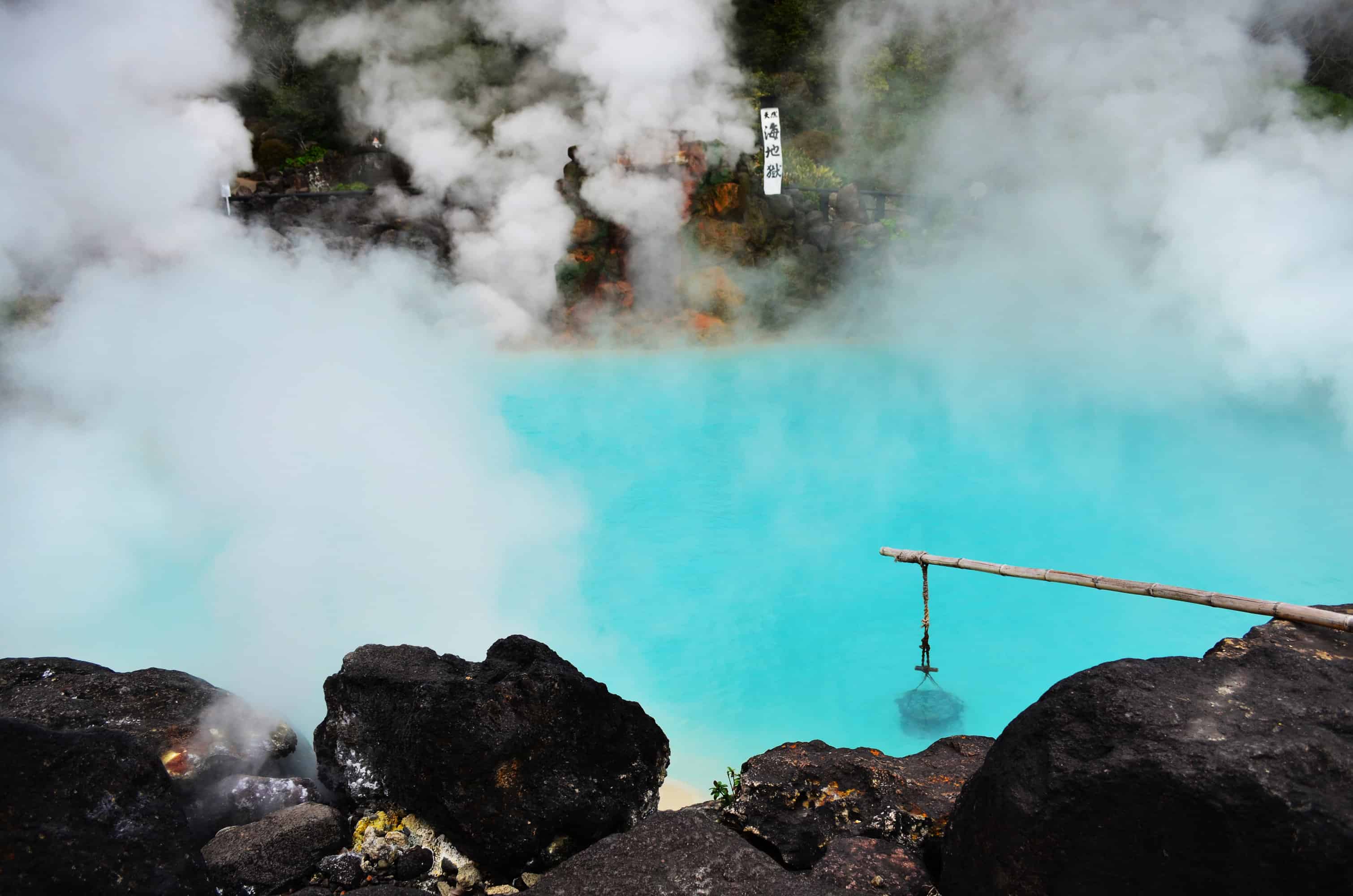Imagine an itinerary dedicated to a deep soak. If a relaxing bath is your idea of paradise, head to Oita, a pristine region on Japan’s southernmost island, where hallowed waters from more than 4,000 hot springs flow into bubbling tubs facing views of verdant valleys, warbling rivers and volcanic peaks.
Hot springs, called “onsen,” flourish throughout Japan, but the Oita area boasts the highest output of onsen water in all of Japan, and along with it, an abundance of notable bath houses and resorts that draw millions of visitors each year to lounge in mineral-rich, restorative waters. Getting there is easy — a flight into Fukuoka or Oita ushers visitors to this natural paradise comprised of several small towns, each with unique flair.
Oita was a sought-after destination long before wellness was a trend. The typically slippery, greenish-hued hot spring water is dense with minerals and has been bathed in and consumed across the millennia to clear and rejuvenate the skin — and treat an endless list of health problems, from diabetes to arthritis. In fact, samurai warriors were known to bathe in hot springs after battles to help heal their wounds.
Onsen culture in Japan dates back thousands of years and holds deep sacred and religious weight. One Japanese legend recounts the creator god Izanagi taking a bath after returning from the underworld to wash away the shame and impurities he encountered there. Perhaps the most sacred aspect of onsen bathing in Japanese culture is the unique bond formed among fellow bathers, called “hadaka no tsukiai,” which translates roughly to “naked friendship” (since traditionally, bathers enter the hot springs nude). Today, most onsen baths are separated into male and female areas; private onsen meant to be shared with just a partner, family or friends, called “kazokuburu,” are also widely available. Nonetheless, visitors to Oita will find that most locals use their onsen bathing time to catch up with neighbors, clear their minds and heal their bodies.
Though there is a varied and seemingly endless selection of onsen across Oita, a good place to start is the ancient seaside town of Beppu, with its narrow winding streets ideal for strolling, a thriving international music scene and a skyline strewn with plumes of steam from the hundreds of onsen evaporating into the sky. Beppu’s famous Hyotan hot spring resort is one of the area’s most beautiful, with not only classic onsen but also waterfall baths and heated sand baths. With three Michelin stars, it’s also the place to sample gourmet hot spring snacks like “onsen tamago,” signature eggs boiled in hot spring water.
Head to the small town of Kurokawa, 90 minutes by car from Beppu city center, for a classic onsen experience accentuated by a serene, naturalistic setting. Visitors can pick up an “onsen-hopping pass” to try out any three 24-hour outdoor baths in the town. Fujiya Ryokan is a local favorite for its ample amenities and ideal spot nestled up against a winding river.
To best honor the sacred nature of this tradition, be sure to brush up on Japan’s strict onsen etiquette — including rinsing off before soaking, removing all clothing and leaving behind any personal items (including soap) before entering the baths. (Note: Bathers with long hair are usually asked to keep it tied up and out of the water, and visitors with large, noticeable tattoos may not be allowed into some onsen at all.)
Soothing and restorative — and a window into one of Japan’s most ancient traditions — the onsen experience is well worth dipping into on your next adventure.

